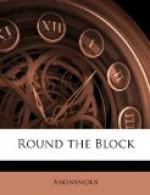The boy Bog rapped, and entered. He was more neatly dressed than when Marcus saw him on the occasion of his first visit. His patched and threadbare coat was replaced by a neat roundabout jacket; his greasy, visorless cap, by a flat felt hat, of which the brim was symmetrically turned up; his tattered shoes by great cowhide boots. The boy was of that age when the human frame grows with vegetable-like rapidity; and he seemed to hare increased a little all around within three weeks.
The boy looked distressingly awkward in his new articles of attire. Had he stolen them, he could not have appeared more guilty in presence of the rightful owner.
“Why, Bog!” said Mr. Minford, reproachfully; “where have you been these three weeks? Not called to see us once!”
The boy’s confusion increased at this unexpected salutation, and he hung down his head at the threshold of the door. Mr. Minford partly reassured his bashful visitor, by springing forward, shaking him heartily by the hand, and saying, with earnestness, “My good lad, I am always glad to see you.” Pet was also by his side in an instant, and warmly shaking the other hand. “You look real nice, Bog,” said she. Mr. Wilkeson also came forward, and said, “Don’t you remember me, Bog?” and clasped him by the right hand when the inventor had relinquished It.
Bog bowed and scraped and blushed, and murmured “Thank you, very well,” several times, confusedly, and at last settled down into a chair which was pushed under him by Pet. Having crossed his legs, he began to feel a little more at ease.
“You’ve been very busy of late, haven’t you, Bog?” asked Pet, charitably anticipating an excuse for the boy’s long absence.
“You’d better believe it,” replied Bog, not looking at her, but studying the pattern of his left boot. “The day after I called here last, Mr. Fink he got a job to stick up bills for a new hair dye, all the way from here to Dunkirk, on the Erie Railroad. Well, he couldn’t go, cos he had lots o’ city posting, ye see; so he hires me to do it for ten dollars a week and expenses. The pay was good, he said, because the work was extry hard. The bills was to be posted on new whitewashed fences, new houses, and places generally where there was signs up telling people not to ‘post no bills.’”
“That was a singular direction, Bog,” said Mr. Minford.
“So I told Mr. Fink,” replied the boy; “but he said as how them were the hair-dye man’s orders. He said the idea was to make folks look at bills who wouldn’t notice ’em if they was on a place all covered over with adv’tisements. They was to be posted up high and strong, so that the owner of the property couldn’t tear ’em down easy. Mr. Fink thought the idea was a good one; but he owned it was a little risky.”
“Perhaps that is why he didn’t care to do it himself,” suggested Marcus Wilkeson.




